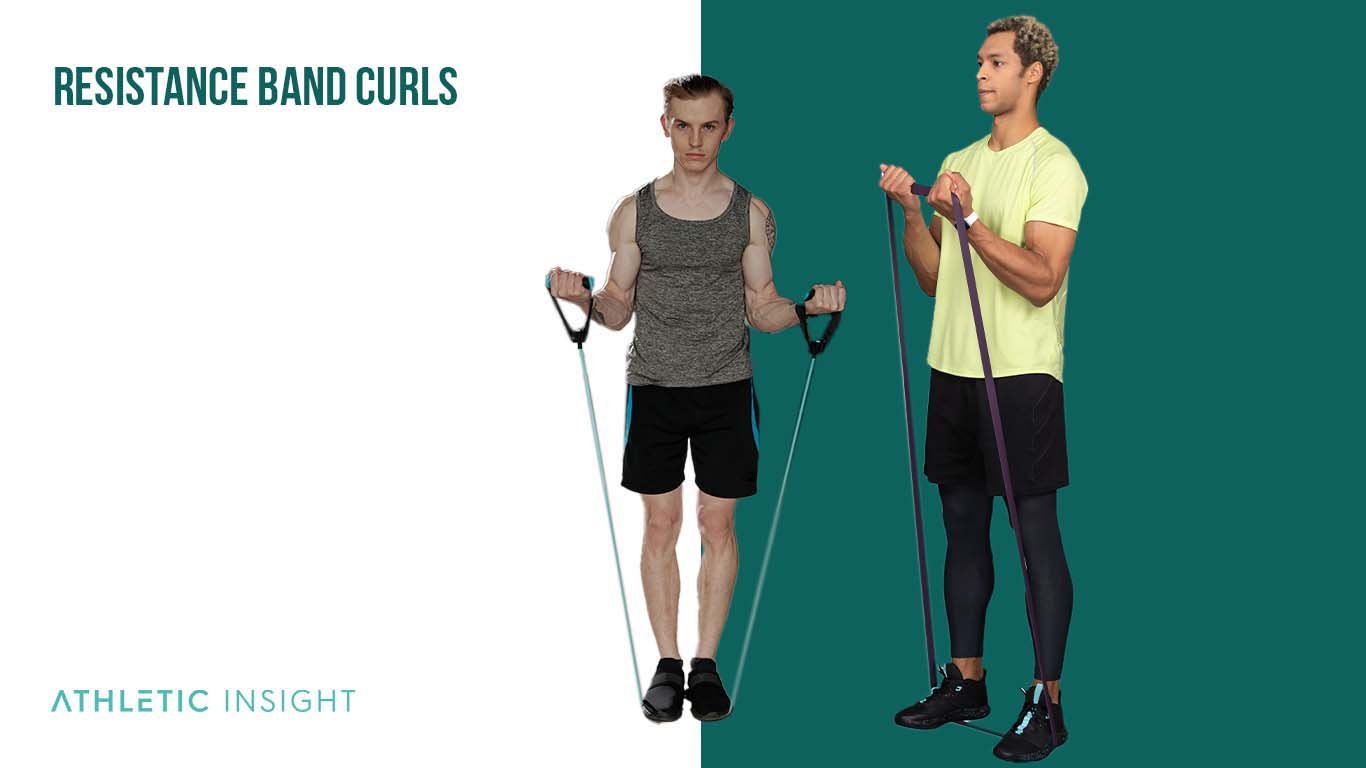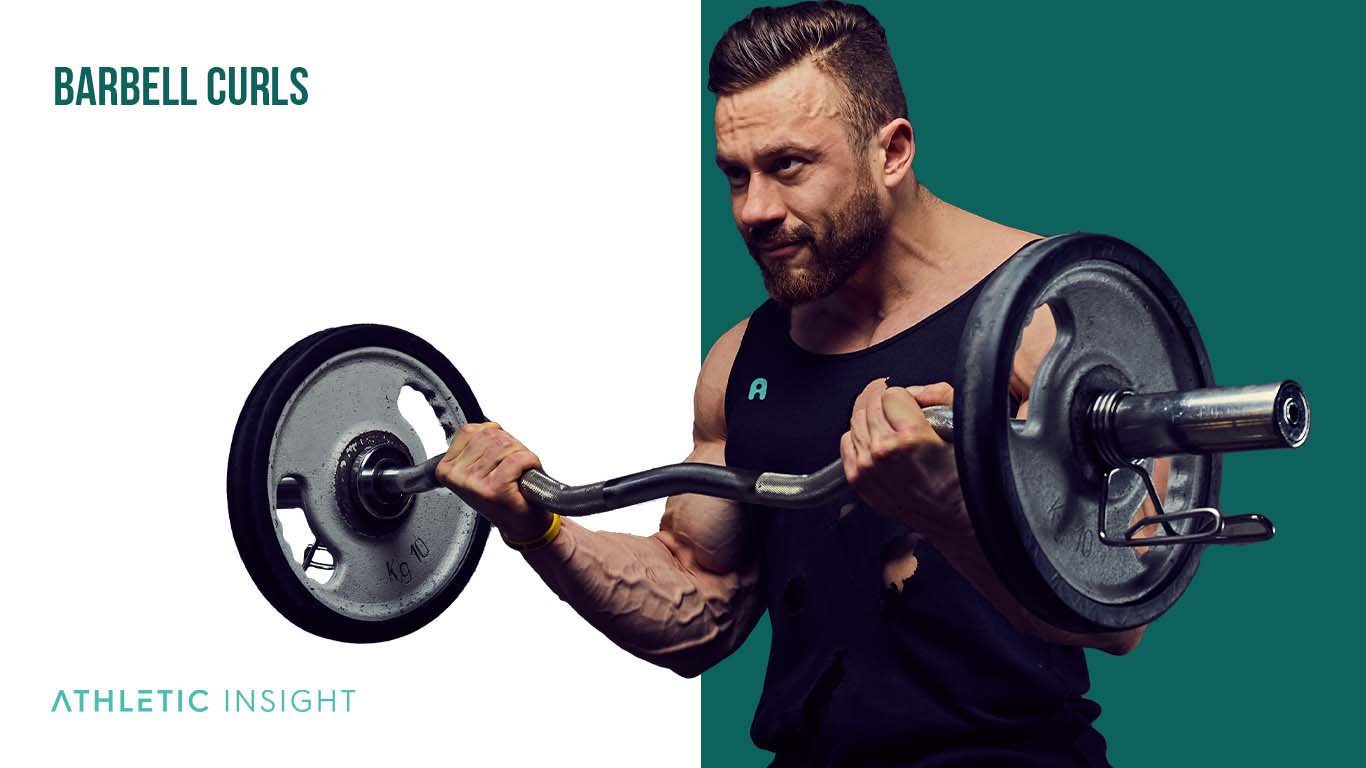The cable curl is an exercise that works the upper body and helps with the pulling motions on the anterior portion of your body. The cable curl primarily taxes the biceps brachii, brachialis, forearms, and deltoids. The cable curl is a practical alternative for bicep curls, barbell curls, and dumbbell curls using heavier weights.
The cable curl alternative is an exercise that uses simile equipment, movement patterns, or muscles to get the same benefits as the cable curl with a slightly differing form or partition. The purpose of using a cable curl for various or alternative exercises is to work with existing injuries, accommodate specific needs, and fix any muscular imbalances.
Beginners may find that using bodyweight cable curl alternatives are helpful. Not only can beginners use cable curl alternatives at home, but they can avoid using gym equipment they are not familiar with. On the other hand, advanced users can try more complex exercises, such as barbell cable curl alternatives, kettlebell cable curl alternatives, and TRX cable curl alternatives, to build bigger arms and a more enormous upper body.
This exercise is useful for those who use their upper body a lot in their sport, such as gymnasts, baseball players, football players, lacrosse players, and basketball players. Other sports may also require the use of cable curls, such as bodybuilders and weightlifters, who need to build bigger hypertrophic muscles for competition or use their biceps for other lifts, such as chin-ups or overhead lifts.
1. Resistance Band Curls
Resistance band curls are a cable curl alternative that works the bicep, anterior deltoids, and forearms. This exercise is good for beginners who do not have access to a gym or want to try a lighter-weight alternative to the cable machine.

Alternatives to resistance band curls include barbell curls, dumbbell curls, resistance band single-arm, curls, cable curls, and eccentric chin-ups. This exercise is suitable for those who do not yet know how to use heavier weight with proper form. One mistake to avoid during this exercise is to sway your entire body backward. Users can prevent this mistake by only fingering at the elbows and keeping their core tight.
The toughness level of this exercise is a 3 out of 10 since users can easily choose the weight and resistance they want to use for this exercise.
2. Barbell curls
Barbell curls is a cable curl alternative that works the core, shoulder stabilizers, biceps brachii, anterior deltoids, wrists, and forearms. This exercise is good for bodybuilders and weightlifters who want to build bigger arms and shoulder muscles.

Alternatives to the barbell curls include dumbbell curls, dumbbell supine curls, barbell overhand curls, cable curls, overhand cable curls, and resistance band curls. One mistake to avoid during this exercise is to round your upper back. Users can prevent this mistake by bracing their core and keeping their chests upright during the entire range of motion.
The toughness level of barbell curls is a 5 out of 10 since the barbell may be too heavy for some beginners.
3. Dumbbell Curls
Dumbbell curls is a cable curl alternative that works the biceps brachii, anterior deltoids, forearms, and core. This exercise is a good choice for athletes who want to work on unilateral strength and for bodybuilders who may have mobility issues and cannot use the barbell.

Alternatives to the dumbbell curls include cable curls, single-arm dumbbell curls, barbell curls, incline bench dumbbell curls, seated dumbbell curls, and seated cable curls. One mistake to avoid during this exercise is to use your momentum to lift the weights. Users can prevent this mistake by keeping their cores tight and only hinging at their elbow to lift and lower the weight.
The toughness level of this exercise is a 4 out of 10 since people can choose lightweight dumbbells.
4. Alternating Curls
Alternating curls is a cable curl alternative that works the biceps brachii, anterior deltoids, core, and forearms. This exercise is good for fixing any muscular imbalance that athletes may have in their arms due to overuse on one side during their sports, such as throwing a football or throwing a baseball.
Alternatives to the alternating curls include barbell curls, alternating cable curls, rope cable curls, seated alternating dumbbell curls, and incline bench alternating dumbbell curls. One mistake to avoid during this exercise is to use your momentum to lift the weights. Users can prevent this mistake by breaking their core and keeping their shoulders facing forward.
The toughness level of this exercise is a 4 out of 10 since it requires more coordination than other curl exercises.
5. Lying Cable Curls
The lying cable curls is a cable curl alternative that works the biceps. Since you are lying down and there is no extra stabilization required, this exercise isolates the biceps muscles during the entire range of motion for extra growth. Bodybuilders and weightlifters will love this arm-building movement.
Alternatives to the lying cable curls include standing cable curls, preacher cable curls, lying dumbbell curls, lying cable shrug, incline dumbbell curl, and standing barbell curl. One mistake to avoid during this exercise is to shrug your entire body instead of just moving your elbows. Users can prevent this mistake by slowly lowering and raising the weight with their breath.
The toughness level of this exercise is 4 out of 10 since your body will be stabilized during the entire movement.
6. Hammer Curl
The hammer curl is a cable curl alternative that focuses explicitly on the long head of the biceps and the brachialis muscle. This exercise also works the brachioradialis, which is the forearm muscles, during the eccentric and concentric portion of the lift. This exercise is stubble for bodybuilders and weightlifters who want to build biceps.
Alternatives of the hammer curl include the alternating hammer curl, barbell curl, seated hammer curl, seated alternating hammer curl, and incline dumbbell curl. One mistake to avoid during the exercise is rotating your wrist during the motion. Users can prevent this mistake by keeping both wrists facing inwards and having the weights touch their shoulders at the top of the movement.
The toughness level of this exercise is a 4 out of 10 since it requires very little mobility.
7. Chin Up
The chin-up is a cable curl alternative that works the bicep brachii, brachioradialis, brachialis, pectoralis major, posterior deltoid, teres major, and latissimus dorsi. This exercise is good for athletes who want to improve their relative strength and cut down on body fat.
Alternatives to the chin-up include the pull-up, barbell curl, dumbbell curl, eccentric chin-up, archer pull-up, and chin-up iso hold. One mistake to avoid during this exercise is using momentum to get your head over the bar. Suters can avoid this mistake by lowering slowly and by using only their arms to pull upwards.
The toughness level of this exercise is a 7 out of 10 since it requires low body fat, ample upper-body strength, and core strength.
8. Preacher Curls
Preacher curls is a cable curl alternative that works the biceps brachii short head, biceps brachii long head, brachialis, brachioradialis, and forearms. This exercise is good for weightlifters and bodybuilders who want to target the anterior side of their arm for a bigger size.
Alternatives to this exercise include dumbbell preacher curls, dumbbell alternating preacher curls, seated dumbbell curls, seated alternate dumbbell curls, incline dumbbell curls, and incline barbell curls. One mistake to avoid during preacher curl is mowing your forearms off the pad. Users can prevent this mistake by keeping their elbows on the pad at all times and keeping their arms straight at the bottom of the movement.
The toughness level of this exercise is a 5 out of 10 since it requires more form and concentration than other cable curl alternatives.
9. Spider Curls
Spider curls is a cable curl alternative that works the biceps primarily. Since the user is supported fully by the incline bench, the focus is only on the biceps to raise and lower the weight. This exercise is good for bodybuilders and weightlifters who want to build their bicep muscles.
Alternatives to this exercise include the incline dumbbell curl, standing barbell curl, seated barrel curl, seated dumbbell curl, alternating dumbbell curl, and cable curl. One mistake to avoid during this exercise is to move your chest off the pad. Users can prevent this mistake by keeping their bodies rigid and providing a base of support with their feet on the ground.
The toughness level of this exercise is a 4 out of 10 since it requires more focus and form.
What to know about Cable Curl alternatives?
Cable curl alternatives are an excellent option for beginners who do not have the equipment to perform these exercises in their homes or do not feel comfortable at a gym. Furthermore, they are suitable for athletes, bodybuilders, or weightlifters who have specific needs and muscular growth concerns that they want to address with alternatives to the traditional cable curl exercise.
Which Cable Curl alternative is beginner friendly?
The best exercises for beginners include resistance band curls, alternating curls, dumbbell curls, hammer curls, and preacher curls.
Which Cable Curl alternative is better for biceps?
The Cable Curl alternatives specifically include lying cable curls, hammer curls, spider curls, and preacher curls. Incorporating the cable curl exercise to any biceps exercise routine will help grow the biceps muscles.
Which Cable Curl alternative is better for strength?
The best cable curl attractive for full upper-body strength includes barbell curls and the chin-up exercise.
When should an athlete use the Cable Curl alternative for exercise?
Athletes should consider using a cable curl alternative for their workout if they want to build bigger arms, upper body strength, and upper body power. Some alternatives that are useful for athletes include barbell curls, alternating curls, and the chin-up for full-body toning.
What are the alternatives to Cable Curl at home?
Beginners who are not sure about going to a gym on their own can do cable curl alternatives at home with very little or no equipment. The best exercises at home include trying resistance band curls for building bigger biceps and targeting their shoulders with just a lightweight resistance band.
Can Cable Curl alternatives replace the Cable Curl?
Cable curl alternatives cannot fully replace cable curl exercise, but they can target the same muscle groups, provide similar benefits, and increase upper-body strength.
What are the Cable Curl Variations?
There are numerous cable curl variations based on your specific needs.
- Resistance Band Curls – Beginner cable curl variation that works the muscular stimulus, provides exercise opportunities, and stabilizes your core.
- Barbell curls – Advanced cable curl variation that builds full upper-body strength and shoulder stabilization.
- Dumbbell Curls – This cable curl variation builds bigger biceps and strengthens elbow flexion.
- Alternating Curls – This cable curl variation concentrated on building unilateral strength to get rid of any muscular imbalances.
- Lying Cable Curls – Bicep-specific cable curl variation.
- Hammer Curl – Targets the long head of the bicep during this cable curl variation.
- Chin Up – This cable curl variation is a full-body toning and strength exercise.
- Preacher Curls – This cable curl variation is suitable for bodybuilders who want to isolate their biceps.
- Spider Curls – This cable curl variation is good for athletes and bodybuilders who want to work on their anterior arm muscles.



